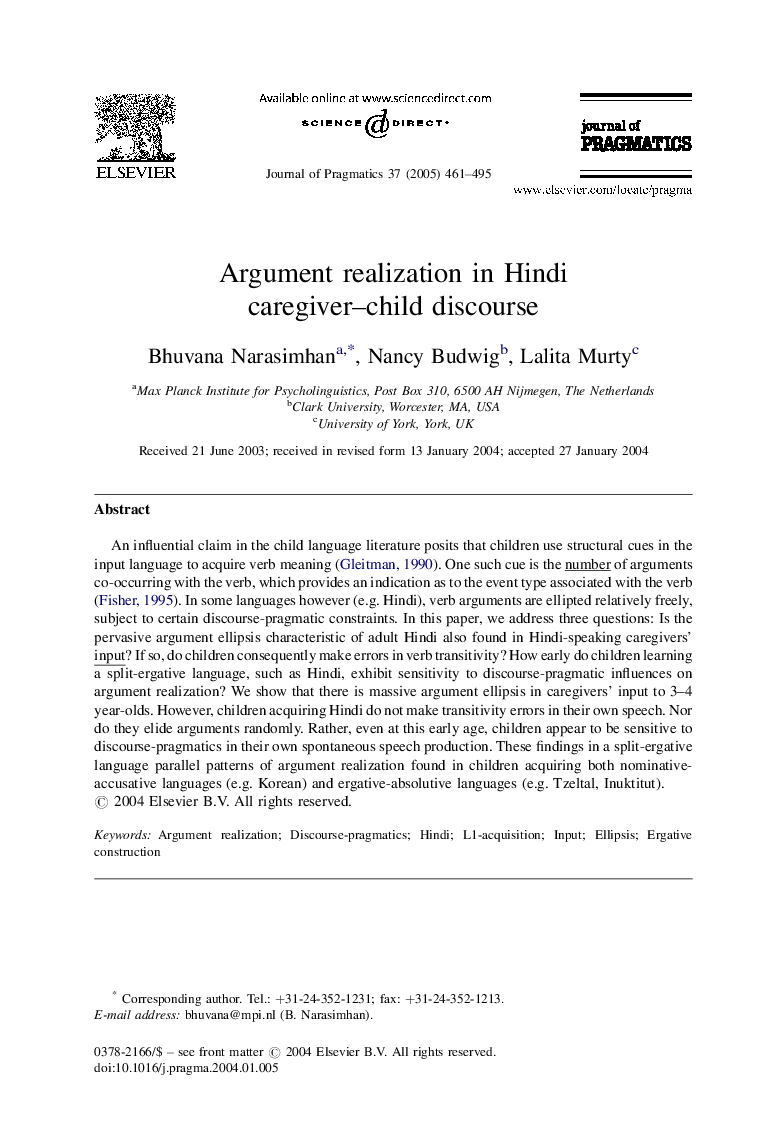| کد مقاله | کد نشریه | سال انتشار | مقاله انگلیسی | نسخه تمام متن |
|---|---|---|---|---|
| 10460316 | 923415 | 2005 | 35 صفحه PDF | دانلود رایگان |
عنوان انگلیسی مقاله ISI
Argument realization in Hindi caregiver-child discourse
دانلود مقاله + سفارش ترجمه
دانلود مقاله ISI انگلیسی
رایگان برای ایرانیان
کلمات کلیدی
موضوعات مرتبط
علوم انسانی و اجتماعی
علوم انسانی و هنر
زبان و زبان شناسی
پیش نمایش صفحه اول مقاله

چکیده انگلیسی
An influential claim in the child language literature posits that children use structural cues in the input language to acquire verb meaning (Gleitman, 1990). One such cue is the number of arguments co-occurring with the verb, which provides an indication as to the event type associated with the verb (Fisher, 1995). In some languages however (e.g. Hindi), verb arguments are ellipted relatively freely, subject to certain discourse-pragmatic constraints. In this paper, we address three questions: Is the pervasive argument ellipsis characteristic of adult Hindi also found in Hindi-speaking caregivers' input? If so, do children consequently make errors in verb transitivity? How early do children learning a split-ergative language, such as Hindi, exhibit sensitivity to discourse-pragmatic influences on argument realization? We show that there is massive argument ellipsis in caregivers' input to 3-4 year-olds. However, children acquiring Hindi do not make transitivity errors in their own speech. Nor do they elide arguments randomly. Rather, even at this early age, children appear to be sensitive to discourse-pragmatics in their own spontaneous speech production. These findings in a split-ergative language parallel patterns of argument realization found in children acquiring both nominative-accusative languages (e.g. Korean) and ergative-absolutive languages (e.g. Tzeltal, Inuktitut).
ناشر
Database: Elsevier - ScienceDirect (ساینس دایرکت)
Journal: Journal of Pragmatics - Volume 37, Issue 4, April 2005, Pages 461-495
Journal: Journal of Pragmatics - Volume 37, Issue 4, April 2005, Pages 461-495
نویسندگان
Bhuvana Narasimhan, Nancy Budwig, Lalita Murty,